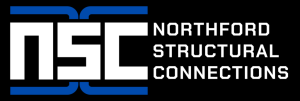“`html
How to Choose the Right Connection for Your Structure
When it comes to structural design, selecting the appropriate connections is critical. The integrity and longevity of a structure depend significantly on how well these connections are designed and executed. In this article, we delve into the factors that influence your decision-making process for choosing connections, particularly in the context of precast solutions.
Understanding Structural Connections
Connections in structural design serve as the link between different elements of a structure, such as beams, columns, and walls. They transfer loads and moments, ensuring that the structure remains stable and performs as intended. The right choice of connection enhances load transfer, accommodates movement, and provides ease of construction. Here, we explore key considerations for making informed choices regarding structural connections.
Factors to Consider When Choosing Connections
1. Load Requirements
The first step in choosing connections is to understand the load requirements of your structure. Different connections have varying capacities to handle tension, compression, and shear forces. A comprehensive analysis of anticipated loads, including dead loads, live loads, wind loads, and seismic activity, is essential. Use well-established engineering principles and methods to determine the load that each connection will need to endure.
2. Material Compatibility
Connections should complement the material properties of the main structural elements. For example, when using precast solutions, the connection type must align with the precast concrete’s characteristics. Each material—whether steel, timber, or concrete—has unique strengths and weaknesses. Assess factors like weight, thermal expansion, and moisture absorption to ensure compatibility.
3. Connection Type
There are several types of connections available, including rigid, pinned, and moment-resisting connections. The choice between these can significantly impact the behavior of the structure:
- Rigid connections provide fixed support, transferring moments and forces without rotation, ideal for high-stress applications.
- Pinned connections allow rotations but resist lateral loads, suitable for lighter structures.
- Moment-resisting connections are ideal for areas requiring significant lateral stability, often classified as rigid.
Understanding the intended functionality of your structure will guide you toward the right connection type.
4. Construction Methodology
The method of construction can also influence the selection of connections. With precast solutions, connections often need to facilitate quick assembly while maintaining structural integrity. Common methods include:
- Bolted connections allow for rapid assembly and disassembly, making them ideal for precast components.
- Welded connections provide exceptional strength and continuity but require careful logistics during the construction phase.
Evaluate the overall construction process when determining the best connection type. An efficient construction methodology can save time and cost, ensuring that the project remains on schedule.
5. Environmental Conditions
Environmental factors play a pivotal role in the performance of structural connections. Corrosion, temperature fluctuations, and soil conditions can affect different connection types.
- In coastal areas, consider using corrosion-resistant connections.
- For high-temperature locations, ensure that materials can cope with thermal expansion.
Make sure to thoroughly assess the environmental conditions of the site where the structure will be built.
6. Ease of Maintenance
Connections should not only be robust but also facilitate ease of maintenance. Consider future inspection and repair needs. Some connections can be difficult to access, complicating maintenance efforts. Choose connection types that allow for straightforward access and repair without compromising safety and integrity.
Analyzing Design Codes and Standards
Additionally, it’s crucial to refer to local building codes and industry standards when selecting connections. Different regions may have specific regulations regarding connection design, materials, and load considerations. Adhering to these standards ensures that your structure is compliant and safe, mitigating risks of future modifications or inspections. Knowledge of applicable codes is paramount in guiding engineering decisions.
Collaboration with Professionals
When navigating the complexities of structural design and connection choices, consulting with structural engineers and professionals is invaluable. They can provide insights into the best practices, innovative solutions, and potential risks associated with various connections. Their expertise can help you avoid costly redesigns and ensure that the structural integrity of your project is not compromised.
Conclusion
Choosing the right connections for your structure is a multifaceted process. It requires consideration of load requirements, material compatibility, connection types, construction methodology, environmental conditions, and maintenance needs. By following these guidelines, engineers and designers can ensure that their choices optimize both safety and functionality, particularly when utilizing precast solutions. With the right connections, structures can achieve their intended purpose with longevity and resilience.
“`







